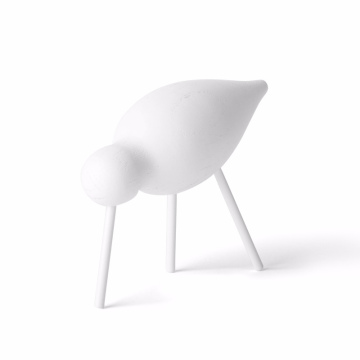Negima Yakitori: A Delicious and Savory Skewer from Japan
Negima yakitori (ねぎま焼き鳥) is a quintessential Japanese dish that blends tender chicken with green onions (negi), skewered and grilled to perfection. It holds a special place in Japan’s culinary culture, particularly within the broader tradition of yakitori (grilled chicken skewers). To truly appreciate the history of negima yakitori, it's important to understand how yakitori evolved and how the pairing of juicy chicken with crisp, sweet green onions became a defining feature of this iconic dish.
The Origins and Tradition of Negima Yakitori
Yakitori has long been a Japanese comfort food. While the exact origin of yakitori is hard to trace, it became particularly popular in the post-World War II era as a cheap and convenient meal for the working class. Grilled over an open flame, yakitori was an affordable, savory snack that could be eaten quickly, making it an ideal choice for busy workers in the bustling streets of Japanese cities.
Negima yakitori, specifically, refers to a style where pieces of succulent chicken are skewered alongside green onions, with the scallions acting as a balancing agent against the richness of the chicken. The alternating layers of chicken and spring onions are a representation of the Japanese ideal of balancing contrasting elements in a dish—juiciness with crispness, sweetness with savory, and smokiness with freshness.
Key Ingredients in Negima Yakitori: What Makes It Unique
1. Chicken: The Star of the Skewer
The choice of chicken is critical in the creation of negima yakitori. The chicken is usually thigh meat (momo) or breast meat (sashi), although other parts such as chicken skin (kawa) may also be used for variety.
- Chicken Thigh (Momo): The thigh is favored for negima yakitori due to its tenderness and higher fat content, which provides a juicy, succulent mouthfeel. The fat in the momo also carries flavor better, giving the skewer a rich, satisfying bite.
- Chicken Breast (Sashi): Lean and firm, chicken breast offers a cleaner flavor with less fat. When used in yakitori, it tends to be drier, so it’s important to ensure it’s cooked perfectly to maintain moisture.
- Chicken Liver or Skin (optional): For a more adventurous version of negima, chicken liver or skin can be used, which adds a complexity of flavors and a crispy texture.
2. Green Onions (Negi)
The green onions are a defining characteristic of negima yakitori. While scallions (green onions) are commonly used, the thickness and flavor of the negi vary depending on the region and variety of onion. They are typically cut into 1–2-inch pieces, with a few pieces of chicken interspersed between them on the skewer. The sweetness and sharpness of the green onions provide a welcome contrast to the richness of the chicken, and when grilled, the onions become tender and slightly caramelized, releasing natural sugars and a smoky aroma.
3. The Sauce: Tare or Shio
In yakitori cooking, the seasoning is what distinguishes one skewer from another. Negima yakitori can be salted (shio) or glazed with tare—a sweet-savory soy-based sauce that adds a rich umami profile to the dish.
- Tare Sauce: A classic glaze for negima yakitori, tare is made by reducing a mixture of soy sauce, sake, mirin, and sugar into a thick, glossy sauce. The sugar creates a caramelized finish, while the sake and mirin provide a subtle depth of flavor. Tare sauce is applied during grilling, allowing the sauce to infuse into the chicken, providing both a sweetness and a salty richness to each bite.
- Shio (Salt): An alternative approach, shio simply uses sea salt to season the chicken, allowing the natural flavors of the meat to shine through. The salt accentuates the crispy exterior while highlighting the juiciness inside.
The Grilling Process: Mastering the Art of Yakitori
Grilling negima yakitori is an art that requires a careful balance between the heat of the grill and the timing of cooking. Traditionally, negima is cooked over charcoal, or sumibi, as the high, direct heat imparts a deep, smoky flavor that enhances the natural taste of the ingredients.
1. Skewering:
- Threading the Skewers: Begin by carefully threading the chicken and green onions onto bamboo skewers, alternating between the two. Be sure to leave a little space between each piece, allowing the heat to penetrate and cook evenly.
" - Skewering Tips: The chicken should be skewered in a way that the pieces stay intact during grilling. Many chefs use a specific pattern of threading to allow for even cooking, often placing the pieces of chicken next to larger chunks of onion to prevent the chicken from drying out.
2. The Charcoal Grill (Sumibi):
- Charcoal Grilling: The charcoal (binchotan) is the traditional heat source for yakitori, as it burns at a high temperature, emitting very little smoke, and provides a clean and consistent heat. When grilling, keep the skewers close to the heat, allowing the chicken to sear quickly while locking in its juices.
- Gas Grill: If using a gas grill, ensure it’s preheated to a medium-high temperature. Although it lacks the smoky flavor of charcoal, it still works to achieve a similar crispy exterior with proper heat control.
3. Basting with Tare:
- As the skewers cook, periodically brush with tare sauce to glaze the meat and ensure that it caramelizes into a glossy, golden-brown finish. Be careful not to overapply the sauce early on, as this could cause it to burn.
- Grill and Flip: Turn the skewers every couple of minutes to ensure an even cook, with the chicken developing crispy, slightly charred edges while retaining a moist, tender interior.
4. Final Touches:
- Once grilled, serve the skewers immediately, either as they are or with a light sprinkle of sesame seeds or a dusting of shichimi togarashi (a Japanese chili pepper blend) for added depth.
Serving Negima Yakitori: What to Pair It With
Negima yakitori is often served as part of a larger spread of yakitori at an izakaya or yakitori-focused restaurant. To enhance the experience, consider these culinary pairings:
- Steamed Rice: A bowl of steamed white rice helps balance the bold flavors of the skewers, providing a neutral base for the savory chicken and tare.
- Pickled Vegetables (Tsukemono): A side of tsukemono, such as takuan (pickled daikon) or shibazuke (pickled vegetables in vinegar), offers a refreshing contrast to the rich, smoky flavors of the yakitori.
- Beer: Japanese beer, such as Asahi, Sapporo, or Kirin, is the perfect complement to negima yakitori, providing a crisp, refreshing contrast to the deep umami of the grilled skewers.
- Sake: Sake or umeshu (plum wine) also pairs wonderfully, especially with tare-glazed negima, as the subtle sweetness of the sake can accentuate the caramelized finish of the skewers.
Conclusion: A Savory, Smoky Skewer That Defines Japanese Grilling
Negima yakitori is a perfect example of the balance between simplicity and depth in Japanese cuisine. It combines the juicy tenderness of chicken with the crisp sweetness of grilled green onions, all enhanced by the smoky richness of the charcoal grill and the savory-sweet tare sauce. Whether enjoyed at a bustling izakaya, at a yakitori bar, or prepared in your own kitchen, negima yakitori remains one of Japan's most satisfying and beloved dishes.




